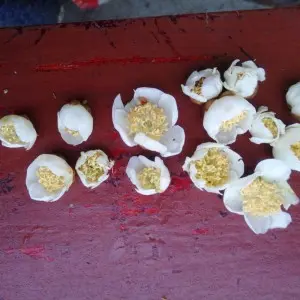Nov . 10, 2024 13:33 Back to list
Enhancing Pear Tree Quality Through Improved Pollination Techniques for Exporters
Enhancing Pear Quality Through Effective Pollination A Guide for Exporters
The global demand for high-quality pears has surged in recent years, leading exporters to seek innovative strategies to enhance the quality of their products. Among the various approaches, optimizing the pollination process of pear trees has emerged as a crucial factor in achieving superior fruit quality. Effective pollination not only increases yield but also directly influences the flavor, size, and overall appearance of pears, making it a vital element in the agricultural practices of exporters.
The Importance of Pollination
Pollination is the process by which pollen is transferred from the male part of a flower to the female part, enabling fertilization. In pear trees, this process is predominantly facilitated by bees and other pollinators. However, many pear varieties are not self-pollinating; they require cross-pollination from compatible trees to produce high-quality fruit. Without effective pollination, pears may be smaller, lack flavor, or have poor color, all of which can negatively impact marketability and sales.
Factors Influencing Pollination
1. Varietal Selection Choosing compatible pear varieties for cross-pollination is essential. For instance, European varieties like 'Bartlett' and 'Bosc' can pollinate each other, increasing fruit set and quality. Exporters must educate themselves about which varieties will thrive in their specific climates and promote cross-pollination.
2. Pollinator Health The health of the pollinator population is critical. Honeybees are the primary pollinators for pear trees, and their activity levels can be influenced by various factors, including weather conditions, pesticide use, and habitat loss. Ensuring a healthy bee population is fundamental to effective pollination. This can be achieved by minimizing chemical treatments during flowering periods and providing habitats that support bee health, such as diverse flowering plants nearby.
3. Timing of Bloom The blooming period of pear trees can vary significantly depending on climate and specific variety. Successful exporters should closely monitor bloom timing to optimize pollination opportunities. Coordinating the planting of pollinator varieties within close proximity can facilitate effective cross-pollination.
4. Environmental Conditions Weather can greatly impact pollination efficiency. Cold weather or rainfall during the bloom period can reduce bee activity and pollen transfer. Exporters can mitigate weather-related issues by using protective measures such as windbreaks or selective irrigation strategies to enhance microclimates during critical pollination times.
pollination of pear trees to improve quality exporters

Best Practices for Enhancing Pollination
To optimize the pollination process, exporters can implement several best practices
- Diverse Planting Planting a mix of compatible pear varieties can ensure that pollination occurs during the blooming period. This diversity not only enhances cross-pollination but also promotes biodiversity, which is beneficial for overall ecosystem health.
- Managed Pollinator Habitats Create and maintain habitats that attract and support pollinators. This includes planting flowers that bloom at various times, providing nesting sites, and avoiding harmful pesticides.
- Monitoring and Research Keeping track of pollinator activity and fruit set can help exporters identify successful practices and areas for improvement. Collaborating with agricultural extension services and researchers can provide valuable insights into effective pollination techniques and new developments in the field.
- Education and Training Offering training for workers on the importance of pollination and proper techniques can improve practices on the ground. Knowledge sharing about the impact of environmental factors on pollination can lead to better decision-making.
Conclusion
As competition in the global market intensifies, pear exporters must prioritize strategies that enhance fruit quality. By focusing on effective pollination, they can significantly improve their product's flavor, size, and aesthetic appeal. This not only meets the rising consumer expectations but also builds a reputation for quality that can lead to increased market share. Adopting best practices in pollination will ensure that exporters are well-equipped to meet the demands of the industry and contribute positively to sustainable agricultural practices.
-
High-Quality Oak Pollen for Allergy Research & Testing – Reliable Oak Tree & Live Oak Pollen Supplier
NewsJul.08,2025
-
Premium Pear Pollen for Pollination in Orchards in Taiwan – Reliable Factories, Manufacturers & Suppliers
NewsJul.08,2025
-
Premium Pollen Producer & Apricot Pollen Suppliers High-Quality Apricot Pollen Factories
NewsJul.07,2025
-
Premium Juniper Tree Pollen for Fruit Tree Varieties – Quality Assured by Leading Plum Pollen Manufacturers
NewsJul.07,2025
-
High Quality Elm Pollen Supplier - Fresh Elm Tree & Apricot Flower Pollen for Sale
NewsJul.07,2025
-
Premium Cherry Pollen for Sale – Fresh Cherry & Avocado Tree Pollen Supplier
NewsJul.06,2025